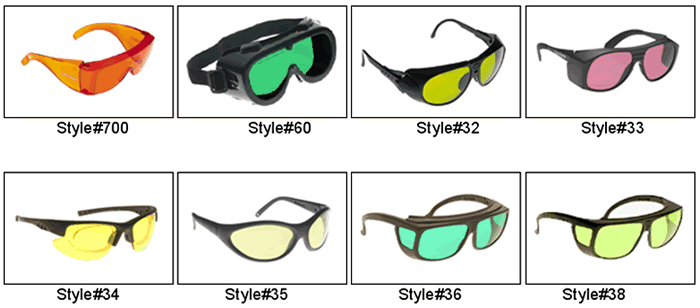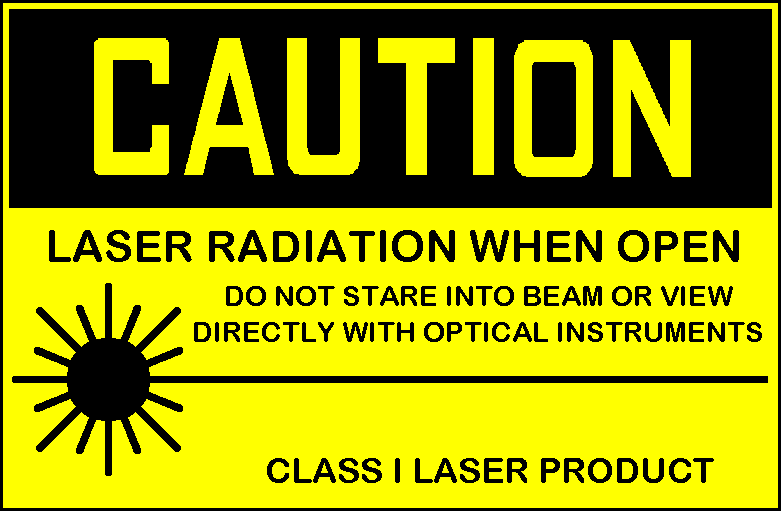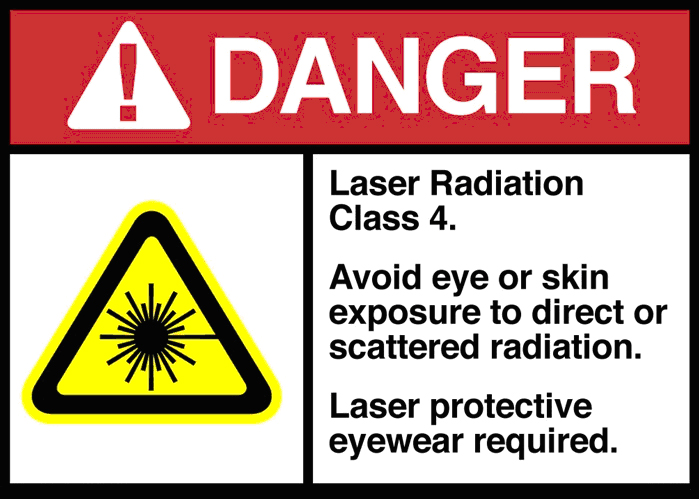Common Laser Safety Knowledge
A laser pointer is a small portable device with a power source (usually a battery) and a laser emitting a very narrow coherent low-powered beam of visible light. Power is
restricted in most jurisdictions not to exceed 5mW. Moderate and high power laser pointers are potentially hazardous because they can burn the retina of the eye, or even the skin. Since even small amounts of laser light can lead to permanent eye injuries, laser safety issue is always a hot topic among users and professionals.
Laser safety is safe design, use and implementation of lasers to minimize the risk of laser accidents, especially those involving eye injuries. To control and decrease the injuries effectively, many countries have strict rules and punishment about laser crime. These regulations also indicate required safety measures, such as labeling lasers with specific warnings and wearing laser safety goggles when operating lasers.
Lasers have been classified by wavelength and maximum output power into four classes and a few subclasses since the early 1970s. The classification categorizes lasers according
to their ability of producing damage on exposed people, form class 1 to class 4. There are two versions for the classification system, one is the “old system” used before 2002, and the other is the “revised system” used in all jurisdictions.
Revised System
Class 1: A Class 1 laser is safe under all conditions of normal use. This means the max. permissible exposure (MPE) cannot be exceeded when seeing a laser with naked eyes or with typical magnifying optics like microscope and telescope.
Class 1M: A class 1M laser is safe for all conditions except when passing through magnifying optics. The MPE for a Class 1M laser cannot normally be exceeded unless focusing optics are used to narrow the laser beam. If the beam is refocused, the laser danger may be increased and the product class may be changed. Do not view directly with optical instruments with Class 1M laser products.
Class 2: A class 2 laser is safe with visible light (400-700nm) limited to 1mW continuous wave. Do not stare into beam for Class 2 laser products.
Class 2M: A Class 2M laser is safe if not viewed through optical devices. The amount of light passing through the pupil cannot exceed the limits for Class 2. Do not stare into beam or view directly with optical devices with Class 2M laser products.
Class 3R: A Class 3R laser is limited to 5mW for visible continuous lasers and it is considered safe if handled carefully. Avoid direct eye exposure with Class 3R laser product.
Class 3B: A Class 3B laser is dangerous if the eye is exposed directly. The Class 3B AEL for continuous lasers in the wavelength range from 315nm to far infrared is 0.5W. For 400-700nm pulsed lasers, the AEL is 30mW. Certain safety methods must be taken for Class 3B lasers. For example, protective eyewear is typically required and users must equip with a key switch and safety interlock. Avoid exposure to beam with Class 3B laser product.
Class 4: Class 4 is the most powerful and dangerous class of laser, including all lasers that exceed Class 3B. A Class 4 laser can burn skin, or cause permanent eye damage by definition. Most industrial, scientific, medical and military lasers belong to this category. Avoid eye or skin exposure to direct or scattered radiation with Class 4 laser pointers.
Class I: This kind of lasers is quite safe and has no danger for eyes.
Class II: This class includes only laser pointers that emit visible light, and the output power may above 1mW. Most laser pointers are in this category.
Class IIa: Commercial laser canners belong to this subclass.
Class IIIa: The output power for Class IIIa does not exceed 5mW. Most lasers in this class are dangerous in combination with optical instruments which change the beam diameter or power density. Eye direct contact for over 2 minutes can cause damage to the retina even without optical devices. Most laser sights for firearms are in this category.
Class IIIb: 5-500mW lasers generally fall into this category and it can cause damage if the beam enters the eye directly. Protective eyewear is recommended for Class IIIb
lasers.
Class IV: Lasers above 500mW are Class IV. Most industrial, scientific, military, medical and some handheld lasers are in this category.

Taking effective safety methods is quite necessary since lots of damage for laser pointers above Class 3B or Class IIIb. Laser safety goggle is the main accessory for eye protection in the market nowadays. Eyewear must be selected for specific type of laser to block the corresponding wavelength. For example, goggle absorbing 532nm typically has orange eyeglass.
Directly staring at laser pointers are strictly forbidden under any condition. Remember to wear safety goggle before using a laser pointer.



Recent Comments